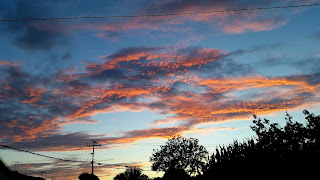To be completely honest, reading up on the drawing software did not interest me I wanted to get down to it and find out how I would/could incorporate drawing into my lessons in PE! BUT I kind of do need to know what software to use later on down the road and what is compatible with a Chrome book for my students if I were to give them these assignments.
PROJECT IDEAS FOR DRAWING.... ahh ha, here we go!
Here are a few that stuck out to me and the different things I would do with them from this chapter and adapt them to PE.
A self-portrait, I could do this in my class, have the students draw a self portrait of themselves but in a physical activity environment where they are moving or playing. Adapting it to my class, PE. This would help them express what they understand about being physically active and I would get a sense of what that looks like in their world, video games maybe (even though that is not being physically active, playing outside or at the park, riding a bike or even playing a sport). A totally fun and new way to learn something about my students.
Powtoon, I did this in this currently class and had so much fun with it. I would love to incorporate this into my class and teaching. Really thinking about it though, I would probably push this out on my fifth graders as they are the best with technology for the most part at the elementary school level and would learn a little faster than the kinders here! I think this would be great for creating a project about a favorite activity, sport or athlete.
Maps, I saw maps and thought... hmmmm how could I use a map, no I won't ever use something like this or have my students create their own map and then it dawned on me!! UHH HELLO, the students could create their own map for an obstacle course, it doesn't have to be an actual geographical map. I think creating a map for their own obstacle course would be fantastic and I know a lot of my students who would love to do something like this, this excites me and I want to try it tomorrow... but I won't because I am doing Physical Fitness Testing, fun stuff..
Graphing, Like maps I though, hmmmmm how could I have my students graph something on the computer? I was so proud that with maps I had thought of creating an obstacle course that I knew I could think of something and as I turned the page I thought of the MILE! Students could graph their mile times and laps on a computer and keep track of their distance. This would give students that visual they need to see in order to know how they are progressing and how many laps they are running. With their times they can see if they are going faster and slower each time they run and they can hold themselves accountable. I could do this through google classroom which I just pushed out to my fifth graders this last week.
This all excites me a lot and I can push most of it out through google classroom, I just don't want to give myself too much to do right now as a new first year teacher and I don't want to overload my students. I am just so happy I read this chapter and expanded my learning to help myself as a teacher and my students one day.
Also just realized that is more than two takeaway resources, but oh well! I am happy to have read them all and found multiple I could use in my class of PE! :)
"You will be exactly as happy as you decide to be" - Unknown







